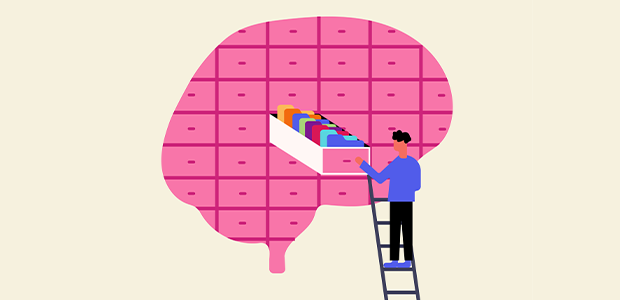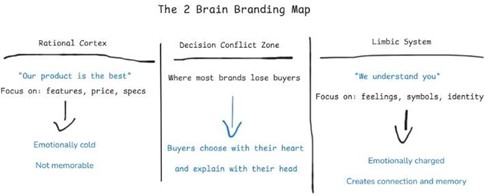
Why startups struggle to sell and what behavioural science reveals about it
Founders often obsess over product features, funnels, and pricing but forget the one thing that drives decisions: human psychology.
The truth is, people don't buy what makes sense – they buy what feels right. And that's precisely what founders usually miss.
I've worked with startups that had brilliant products, but the sales pipelines are weak.
The product category was splendid, and the features were strong. But the message didn't land. It didn't speak to the brain or the heart of their target customer.
The invisible barrier to sales
When I launched my brand, I thought that the most important thing was to inform customers of the product benefits – things like quality, utility, differentiation, and appearance – without realising I had overlooked one key step: I should have included an emotional tone. Communicating only features led to disappointing conversion rates, and I spent months testing different strategies, but none of them were effective.
Many startups communicate logically. But we, as human beings, are wired for emotion, often subconsciously.
A 2024 study by The Journal of Consumer Research found that up to 95% of purchase decisions occur in the subconscious mind.
I learned a lot about neuromarketing, which Martin Lindstrom brought to my attention. The author explains that many brands fail to align with their audience emotionally, causing what he calls a 'neurological friction' – a type of disconnect that breaks the decision-making loop. Before we buy a product, we make automatic decisions that activate the limbic part (emotional brain) of the buyer's brain. The amygdala, a key part of this system, triggers emotional buying responses.
In my book, I introduce this illustration to make it easy to understand.

There's also another reason why consumers don't choose a brand: the Status Quo Bias, which explains why people often resist switching to a product that's better, faster, or more appealing.
William Samuelson and Richard Zeckhauser introduced this idea in their 1988 paper, “Status Quo Bias in Decision Making.”
People often prefer not to make changes to their routines, even when alternatives are clearly better than what is familiar and comfortable.
Another significant factor influencing consumer choices is a concept known as the Affect Heuristic, identified by researchers at the University of Oregon. It shows that we make decisions based on what something makes us feel.
Without realising it, you might be evoking feelings that contradict what you intended to say.
Status quo bias
Many freelancers stick with what they know because switching feels like a risk. It requires learning something new, and they fear it may be a mistake that could affect their businesses.
"What I have now works, and I don't have time. I am very busy."
Affect heuristic
When users visit the new tool's website, their first impression may be:
- The product description sounds feature-heavy
- The presentation looks complicated to understand fast
- The tone comes across as cold
Emotionally, this product feels like high effort and low warmth; as a result, most users tend to bounce.
Behavioural fixes that convert
In my upcoming book, I introduce simple steps for founders to avoid these mistakes and maintain a healthy balance between what they offer and what the customer truly wants or needs.
The brain decides in milliseconds. Here are a few strategies to reduce psychological friction:
1. Make it feel easier to choose you. Don't just say you're better; show it is effortless to change. "Switch in 4 minutes. No time lost."
2. Speak to emotion. Don't say: "20% cheaper" Say: "Finally, feel in control again."
3. Ask yourself: "Does this page feel clear or cold and heavy?"
Quick test
"Ask a friend to read your landing page and tell you what they felt and not what they understood. If they say 'it's clear', that's not enough.
Strategy snapshot
If they don't feel it, they won't buy it. Behavioural strategy isn't fluff. It's function.
From insight to action
Behavioural strategy isn't just psychology; it's a competitive advantage.
In a crowded market, clarity is a matter of survival. But emotion is what truly scales.
By now, you've likely realised that you don't need to shout louder; you need to connect deeper.
I help founders and brands decode why people buy, and I've translated that into my book Invisible Triggers. Because what drives buying decisions isn't logic; it's emotion, timing, and perception.
For more startup news, check out the other articles on the website, and subscribe to the magazine for free. Listen to The Cereal Entrepreneur podcast for more interviews with entrepreneurs and big-hitters in the startup ecosystem.

